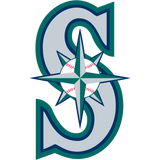
Seattle Mariners' Safeco Field: A Home Run Park in 2016
Safeco Field has regularly been a pitcher’s park in its history, but the home of the Seattle Mariners is playing as more of a hitter’s park this year.
It looks like Safeco Field in Seattle doesn’t want to be left out of the home run craze that has hit baseball this year. Balls are flying out of big league parks at rates not seen since the height of the high-scoring era from the mid-90s to the mid-2000s. For years, Safeco Field has been in the bottom half of the league in park factors for run scoring and home runs.
This year, that has changed. Safeco is still below average in run scoring, with a park factor for runs of .959, ranking 17th of the 30 MLB teams. When it comes to big flies, though, Safeco has a park factor of 1.177, ranking 8th in baseball. This is the highest home run park factor ever seen at Safeco Field.
ESPN park factors go back to 2001. That season, Safeco Field was near the very bottom in runs park factor and home runs park factor. Safeco has regularly been in the bottom half of baseball in both metrics every year since then. There has been just one year in which Safeco Field finished in the upper half in park factor for run scoring and just three times before this year in which it finished in the upper half in park factor for home runs.
Run scoring was particularly low at Safeco from 2010 to 2012, when the park ranked 29th, 26th and 30th in park factor for runs, respectively. The Seattle Mariners’ offense was awful in those years no matter where they played, but particularly bad at Safeco Field. Overall, the Mariners hit .234/.295/.352 as a team from 2010 to 2012. At Safeco Field, they hit .226/.294/.330, with a wOBA of .278.
The team made changes to the park prior to the 2013 season when they altered the outfield dimensions. The biggest change was moving the fence in left-center from 390 feet to 378 feet. One player this change was supposed to help greatly was slugger Jesus Montero, who had been acquired in a trade prior to the 2012 season. In 2012, Montero hit .227/.268/.337 at Safeco Field and .295/.330/.438 on the road. The park change didn’t do much for Montero in 2013. He was awful, got sent to the minors, then tore the meniscus in his knee and missed most of the season.
In this article, the Mariners expected the changes to the park in 2013 to move them from near the bottom in home runs at Safeco Field to the middle of the pack. They ended up moving from 29th in home run park factor to 17th. The change helped overall scoring also, as they moved from 30th in runs park factor to 15th. The next year, Safeco’s park factor for runs dropped all the way back down to 30th, but it had its highest ranking ever in park factor for home runs, ranking 12th.
More from Call to the Pen
This year, Safeco Field is on pace to finish in the top third of baseball in home runs park factor for the first time ever, currently ranking eighth. They are also close to the middle of the pack in park factor for runs, at 17th. Much of the difference can be attributed to some players acquired in the offseason, including Adam Lind, Dae-ho Lee and Nori Aoki.
Adam Lind is having a terrible season. He was supposed to come to Seattle and improve upon the below average production the team was getting previously from Logan Morrison. Instead, Lind has been just as bad as Morrison was. He’s hitting .232/.279/.443 overall. At home, though, Lind has been money, with a .271/.315/.576 batting line. The difference between Lind’s wOBA at home versus on the road is a team-high .128 (among regular players).
Dae-ho Lee was signed out of Korea for the rock-bottom price of $1 million, with an additional $3 million in performance bonuses possible. He’s hit .261/.323/.445 overall, but a healthy .275/.348/.472 at home. Another free agent pick-up was Nori Aoki, who is also enjoying Safeco Field, with a .277/.371/.368 home batting line. Aoki’s home wOBA is .032 higher than his road wOBA.
Of course, not everyone has hit better at Safeco Field. The team’s two biggest sluggers, Robinson Cano and Nelson Cruz, have better numbers away from home. They are still above average hitters at home, but even better on the road. Kyle Seager is having a terrific season. He’s been the regular player on the Mariners who has the lowest split in wOBA at home versus on the road. He’s been better at getting on base at Safeco Field, hitting .293/.394/.506 with 11 homers in 70 games, but has hit for more power on the road (.283/.342/.530, 17 homers in 71 games).
It will be interesting to see if this is a one-year fluke. The previous three times that Safeco Field finished in the upper half of the league in park factor for home runs, it dropped right back down in the following season. In 2004, Safeco was 14th in park factor for home runs. In 2005, it was 26th. Safeco was schizophrenic from 2010 to 2012, with a home runs park factor going from 29th to 13th to 29th again. Similarly, from 2013 to 2015, the park factor for home runs went from 21st to 12th to 22nd. After this year’s homer-friendly ranking, who knows what to expect in 2017.
This article originally appeared on





